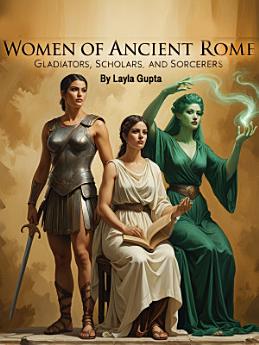Women of Ancient Rome: Gladiators, Scholars, and Sorcerers
About this ebook
The inclusion of female gladiators in Roman society, while controversial, was not without purpose. They were seen as a novelty, often used to satisfy the crowd’s craving for spectacle. Female gladiators fought in a similar manner to their male counterparts, using similar weapons and fighting techniques, although their appearances and the rituals surrounding their combats differed slightly. The shows featuring women gladiators were often held in smaller venues, and the women were sometimes dressed in more revealing costumes, further emphasizing their status as objects of spectacle.
Despite the rarity of female gladiators, some women gained fame for their combat skills and courage. The most well-known historical example is that of "Achillia," a female gladiator who was mentioned by the writer Juvenal. Although much of the historical record is fragmentary, these women’s participation in the gladiatorial games left a lasting impact on Roman entertainment culture.








